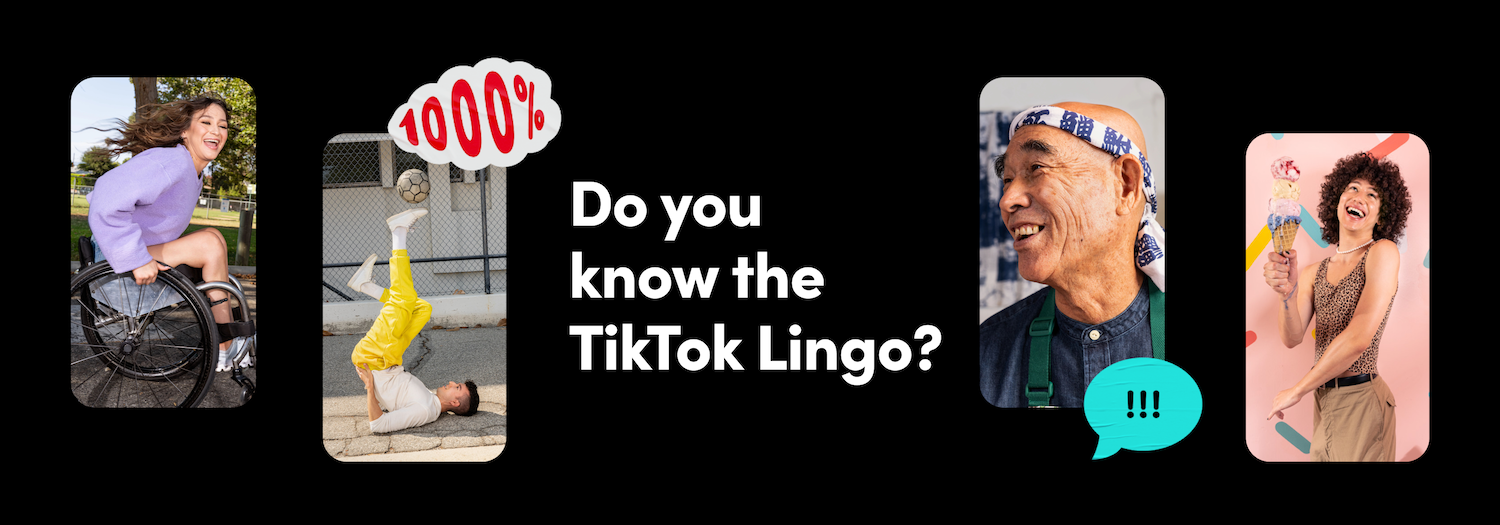
Do you know the TikTok lingo?
Ever scroll through TikTok and see a word or phrase that makes you ask yourself, "what does that even mean?" It's like there's an endless supply of terms to describe specific things on the platform—and you have TikTok's many communities to thank for that. Most of them have devised terminology to talk about their interests. And while community-specific lingo exists on every platform, there's a lot of it on TikTok.
Part of this has to do with the central role that sound plays on TikTok. Trending audio clips can become so popular that people start to recite them in real life, going so far as to reference them in pop culture moments. And TikTok is both high-participation (i.e., anyone can make content) and interest-based (i.e., you can find your niche here, no matter what it is.) And what comes out of that? Lots of specialized conversations, and thus lots of slang.
This language gives you, the marketer, a unique way to connect with people on the platform—people who want to see you learn about niche communities. (76% of TikTok users say they like it when brands are a part of special interest groups on the platform.) What better way to become a part of these groups than to learn their language?
But we know it can be tricky to learn all that slang. So to help you get there, we've outlined the different levels of learning TikTok lingo and given some tips on how to get to each level.

Level 1: Listen, learn, and take notes
Once you've identified a community you want to be a part of, sit back and take in their quirks for a while. Watch the videos they post and read the comments—that's where people continue conversations and share even more lingo. Plus, comments can help you find other people in that community, whose videos can teach you even more about their language. Basically, spend time acting as an anthropologist of the subculture you want to understand.
While you're doing this, jot down words, phrases, or acronyms you see repeatedly. If you can't use context clues to figure out what words mean, you can always ask people in the comments. 79% of users agree that brands should experiment with different topics and interests to see what suits them best on TikTok, so they won't be completely caught off guard if they see you testing the waters in a new space on the platform.
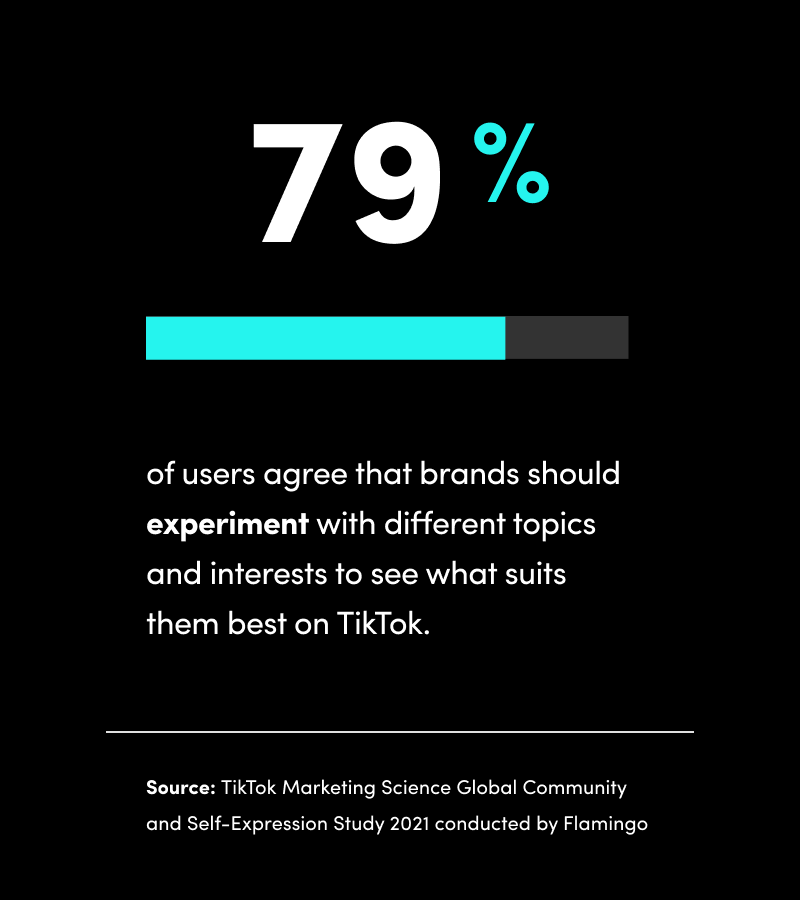
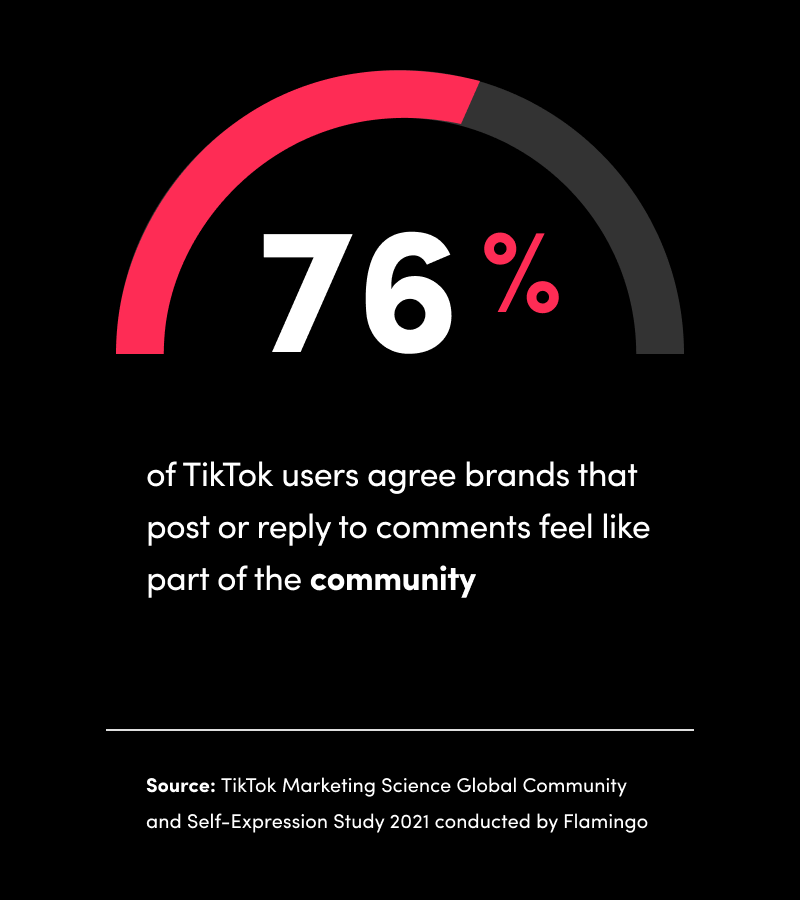
Level 2: Test out language in the comments
Once you have a glossary of community-specific language, it's time to put it to use. If you're not quite ready to use lingo in a video, start by using it in comments, instead—that way, you can gauge how people react to you using those words and phrases. Viewers are open to seeing brands in the comments; 76% of TikTok users agree brands that post or reply to comments feel like part of the community.
Here's an example of what that looks like: Cosmetics brand Rare Beauty commented on a video of their founder saying "Ladies and gentlem[e]n...HER," a phrase that's particularly popular in the #FashionTok and #BeautyTok communities. (Those aren't the only communities that use it, though. It's a quote from a sound clip that went viral this year, and eventually became a popular catchphrase for users.)
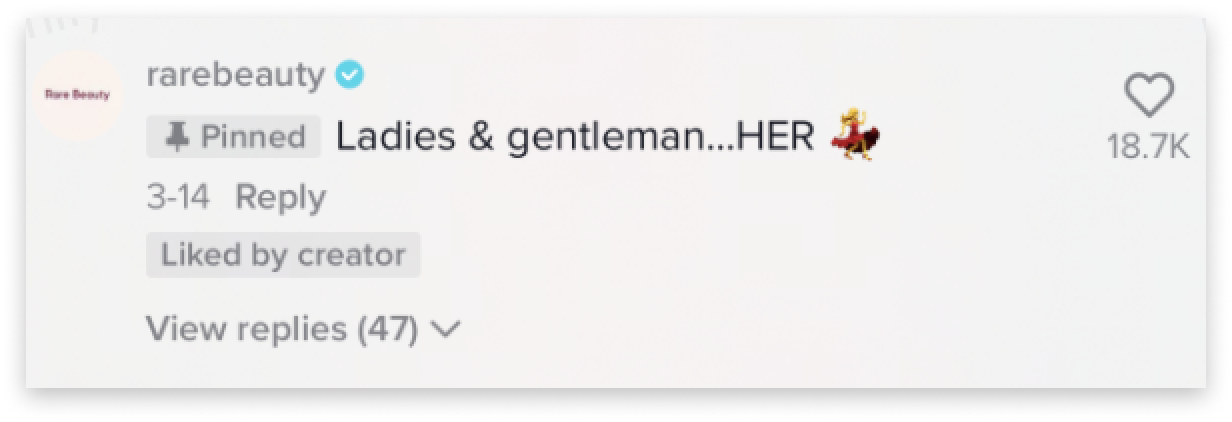
The comment received a wave of engagement and audience interaction, and the creator of the video pinned the comment to the top of the thread, where it got thousands of likes. So not only did Rare Beauty get to see how users would respond to them using the viral term, they also built relationships with users—simply by leaving a comment using a common TikTok term.
Level 3: Use the lingo in original content
Once you figure out which TikTok terms make sense for your brand, you can use them in videos. Start by thinking about the words and phrases that will help you communicate your key message. Want to show users how to use a product? Pick a sound that lines up with actions and tutorials. Want to drive people to make purchases? Use a phrase that illustrates excitement or urgency.
United, a U.S. airline, is great at using community language in their videos. They posted a "guide" to eating one of their in-flight snacks, using the popular phrase "the girls that get it, get it, and the girls that don't...don't." This is another term that started as a viral audio, then quickly became commonly-used lingo—particularly in communities like #GirlsOfTikTok and #FashionTok.
Users often quote the phrase when they're showing themselves doing something that's relatable to a specific sub-group. By using that phrase in their video, United helped viewers feel like insiders who truly understood their brand—which helped them bond with viewers. As a result, the video got strong engagement, including 800+ comments, many of which were users repeating the phrase back at United.
If you're not ready to use lingo on-screen or in a video's voiceover, you can use it in the caption, first. But ultimately, it's good to take a chance and use TikTok terms, even if it's new and different for your brand.
Bonus level: Invent lingo
If you've been operating at level 3 for a while and want to push the envelope, take a crack at making your own lingo. Post a video saying "🚨 New slang just dropped 🚨," or something along those lines, and share the word or phrase you think will work well within the community. Even if it doesn't gain any traction, you've at least made a funny video showing that you're invested in a subculture, and created something that users can play with—which they love. 77% of users like it when brands come up with new challenges, trends, or memes for others to join in with.
A quick glossary of terms from some of our ✨ fave communities ✨
Check out these words and phrases used in active subcultures, which provide a sense of what to look for as you build out your TikTok lingo glossary.
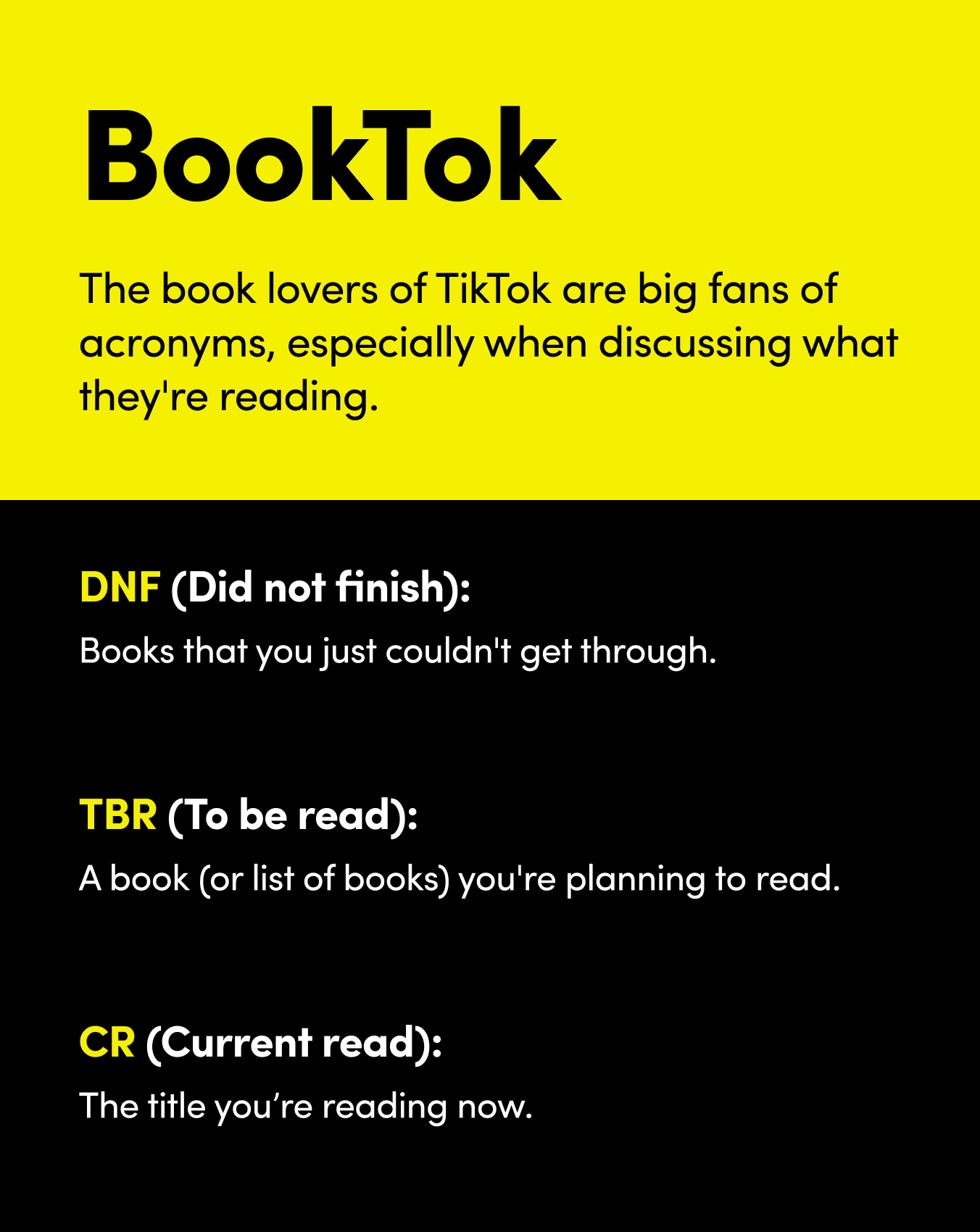
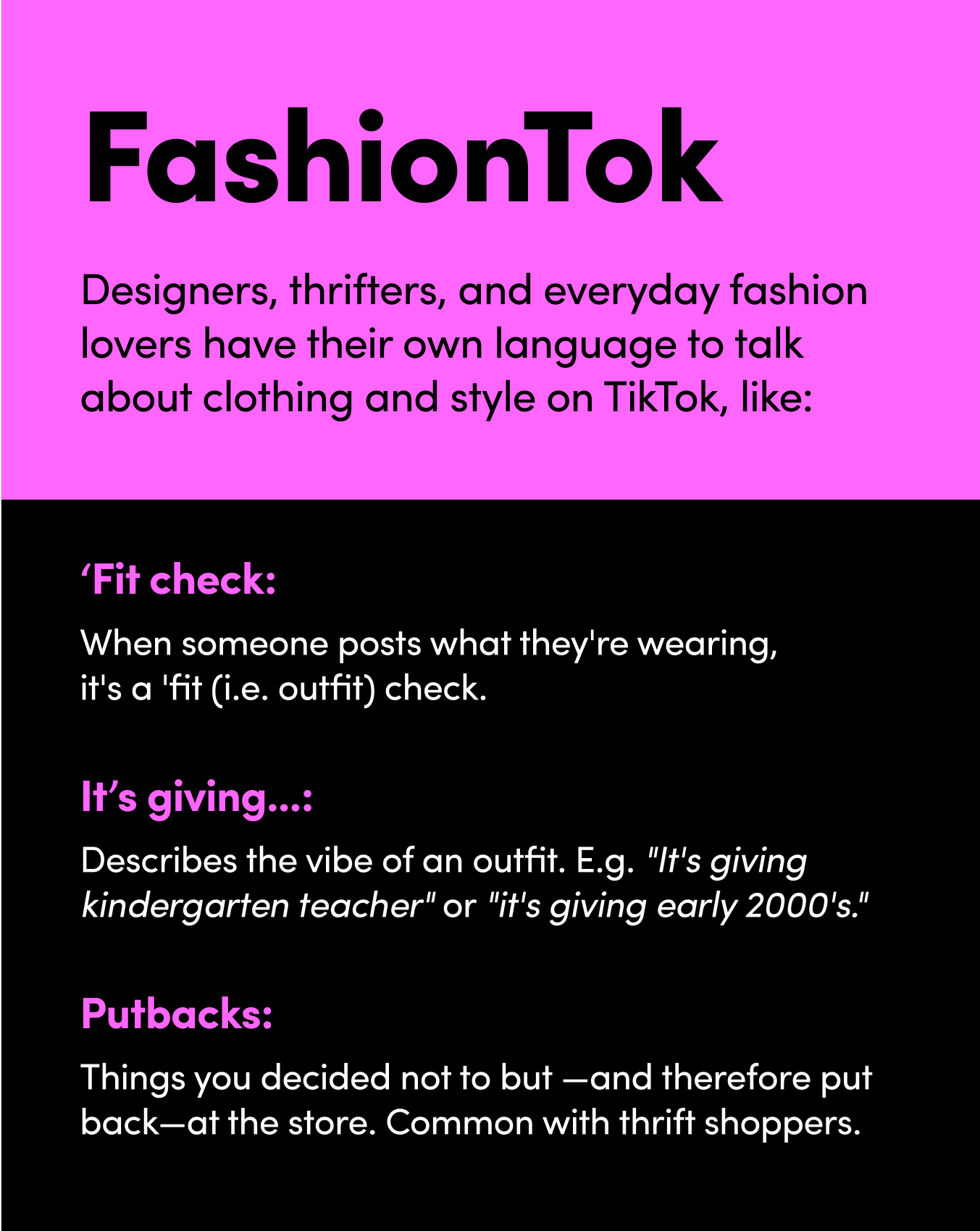
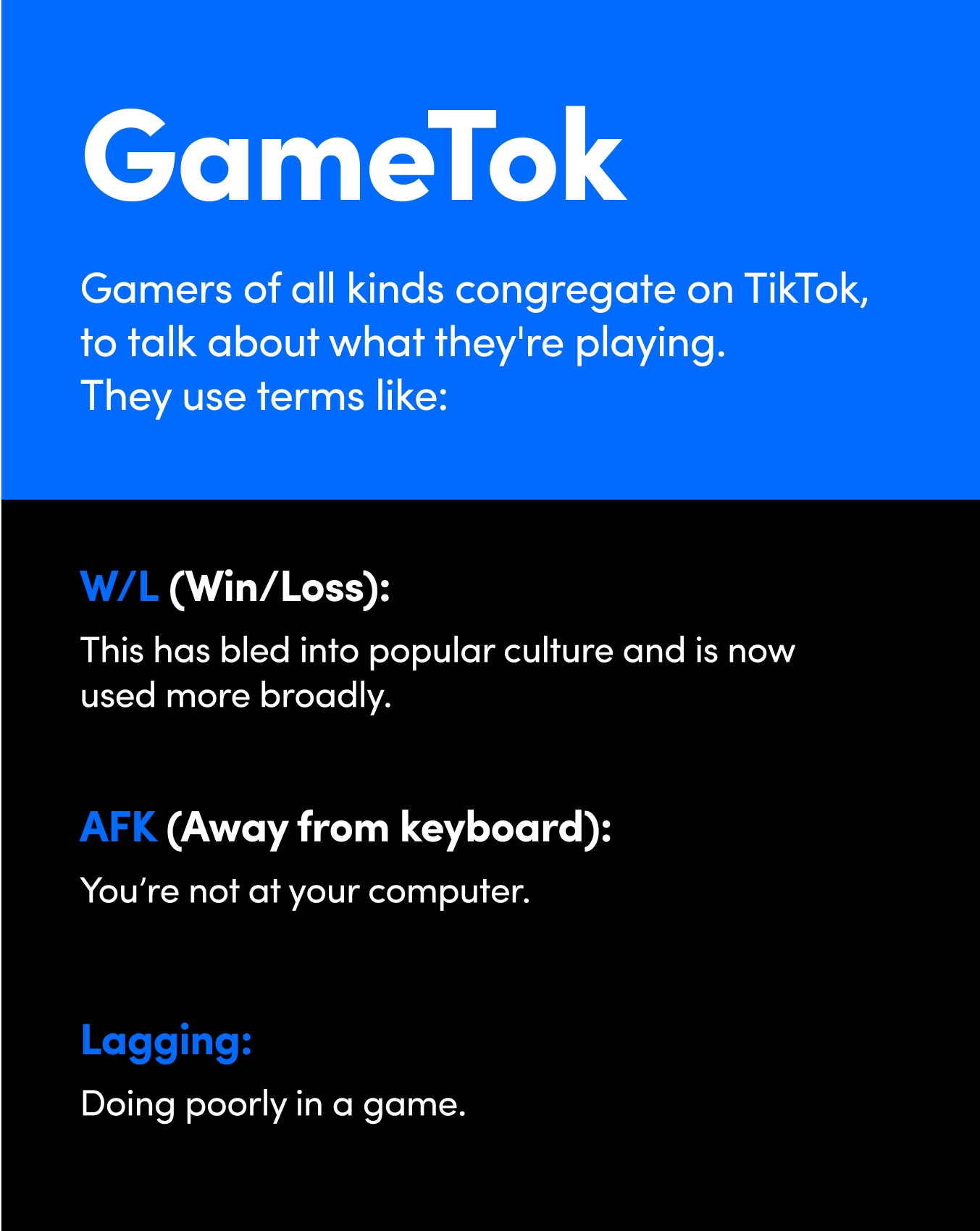
Ready to make some videos with community-specific lingo? Head to our Creative Center to get the tools and insights you need to make fantastic content. Thanks for reading ❤️
*Source for all stats: TikTok Marketing Science Global Community and Self-Expression Study 2021 conducted by Flamingo. Platform numbers reflect data as of July 18, 2022.